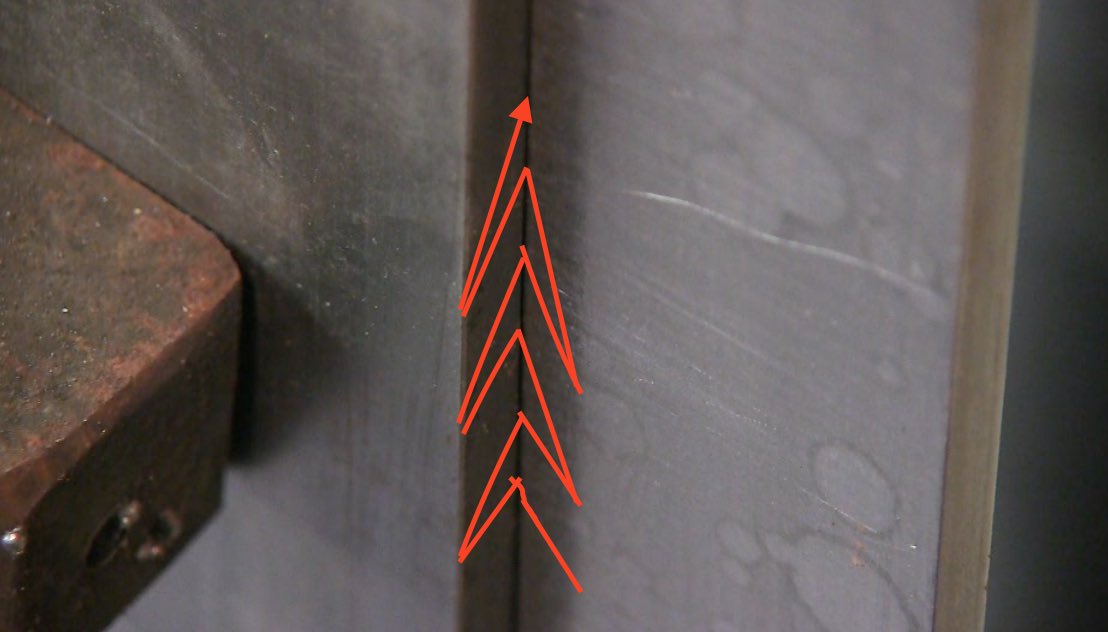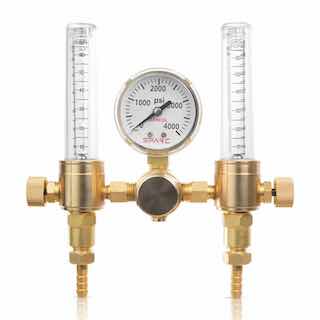Mig Welding Techniques for Short ARC and Spray
"Spray Transfer is Hot ... "
The Mig welding techniques used for short circuit mig are different from those used in spray mig.
For short circuit mig, either straight co2 welding gas or a mix like 75/25 argon/co2 welding gas is used.
Usually, depending on the thickness of the pieces being welded, around 17-23 volts is used. ( for thin sheet metal, voltage might be as low as 14 using smaller diameter wires.)
I like to use as high a voltage and wire speed setting as I can tolerate because above all else...above making a pretty weld, I want to make a strong weld that penetrates.
And of course, when I am welding lots of parts, I like to weld fast so that I actually make a profit
Short circuit mig is so versatile because it is able to be adjusted really cold for sheet metal, or really hot for thick metal.
But there are no mig welding police that will show up at your door if you weld too cold for the sake of making a pretty weld.
Spray transfer mig is way hotter than short circuit and is great for high production in flat, horizontal, and even some overhead fillet weld applications.
But vertical uphill is something that spray is not good for.
Using .035" wire , it takes more than 25 volts to transition into spray mode. using 90/10 argon/co2 welding gas.
you cannot use 75/25 welding gas for spray transfer and expect a smooth spatter free weld.
It will not work very well at all except under special circumstances. You need 90/10 or some other argon mixed gas with 80% or more argon.
Other gases that can be used for spray arc are 98/2 argon/o2 and 95/5 argon/co2 .
these are not the only mixes that allow spray arc but they are pretty common.
Why Spray?
good question.
For my purposes, the only reason to use spray transfer mig is for jobs where deep penetration is needed along with fast travel speed.
I like short circuit mig better for general light duty fabrication because it is more versatile, can weld in all positions including uphill, and is more forgiving....with less heat input.
see more videos on mig welding techniques

















